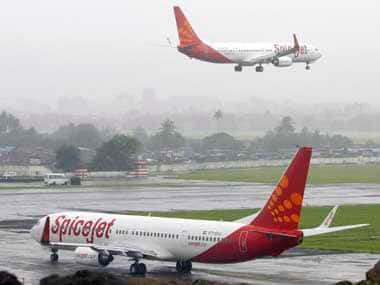New Delhi: The government has been receiving flak for allowing Gulf carriers to make deep inroads in Indian aviation without Indian airlines getting enough reciprocal flying rights. So now it trying to divert our airlines to an entirely different direction. Instead of Dubai and Doha, the civil aviation ministry now wants to push airlines to offer greater connectivity to Central Asia.
Till now, our airlines have been flying to west Asia, Europe and the Americas but countries like Turkmenistan, Khyrgistan, Kazakhistan, Uzbekistan and Tajikistan have not been on the maps of carriers such as Jet Airways, IndiGo, SpiceJet or even Air India. A senior official in the ministry said that the government wants to increase interaction and, therefore, connectivity to these regions and the ministry of external affairs has asked for more flights to these countries. As of now, Indian carriers have no flights to any of these countries and only some skeletal flights from carriers of these nations operate to India.[caption id=“attachment_359266” align=“alignleft” width=“380” caption=“Expansion problems. Reuters”]
 [/caption]
[/caption]
A meeting has been called with all the airlines which fly international routes in the ministry next week where the central Asian destinations will be pushed. The official also said that the Prime Minister’s Office is keen on enhanced connectivity with Myanmar also. Already, the Kazakhstan government has asked for an increase in bilateral flying rights - it currently has only eight flights a week to India. “We can offer a maximum of seven flights each to two Indian cities. But let’s see how negotiations go. SpiceJet has already been allowed to fly to cities like Tashkent”.
Presently, Indian airlines such as Jet Airways, Air India and others are easily dwarfed by powerful global carriers-mainly Gulf-based and some European airlines-which ensure that international traffic from India looking for onward connections goes to their respective hub cities.
Simply put, this means an Emirates will carry Indian passengers to Dubai first and then onward to the Americas or Europe when this traffic could well have been carried by any of the Indian airlines. By pushing for virgin markets in central Asia, perhaps Indian carriers could correct this imbalance.
But why are Indian airlines left out in the cold in the current dispensation? In a policy note, the civil aviation ministry listed out a number of reasons: lesser financial clout and fleet size of our home carriers compared to Emirates, Etihad, Lufthansa and Singapore Airlines; operational cost advantage due to cheaper aviation fuel; lower taxation for foreign carriers; inability of the processes at Indian airports to allow hubbing, etc.
Impact Shorts
More ShortsThe paper also acknowledges that India is a late entrant and foreign airports and airlines have already invested in hub development earlier. Also, airlines like Emirates have been given extensive reach to even smaller Indian cities which enables them to pick up traffic from these cities, carry it to Dubai and provide onward connections. Indian airlines have not been allowed similar access in the UAE.
Obviously, policy-making in the past has not been either conducive to hubbing or taking care of the interests of Indian airlines. First, carriers such as Jet Airways and Kingfisher Airlines have suffered because of Air India’s First Right of Refusal clause. Second, Sixth Freedom Rights granted to some powerful foreign airlines earlier have led to the loss of substantial Indian traffic to foreign carriers.Sixth Freedom Traffic Rights refer to the right of any foreign airline to carry passengers or cargo from India to a third country via their own country.
Civil Aviation Minister Ajit Singh has already taken away Air India’s monopoly over international routes and the government is now going slow on granting sixth freedom bilateral rights to foreign carriers. Now, if he succeeds in convincing airlines such as Jet and IndiGo to fly to mount fights to central Asia, perhaps Indian airlines will get more of the international traffic.
)